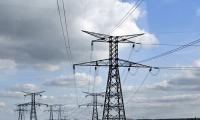KARACHI: Pakistan’s economy has strengthened following successful completion of its three-year programme with International Monetary Fund (IMF) where the economy is expected to grow by 5 percent over the next two years because of China Pakistan Economic Corridor (CPEC) projects as infrastructure gaps may reduce through increased investment in transportation and power.
Willam Foster, analyst for Pakistan at Moody’s, said in an exclusive interview that fiscal deficits had narrowed, foreign exchange reserves had improved and there was advancement in some structural reforms.
Real GDP growth picked up to 4.7 percent in FY-2016 from 3.7 percent at the onset of the IMF programme in 2013. However, Pakistan’s growth potential is limited by the supply-constrained nature of the economy. Moving forward, we expect growth to increase to about 5.0 percent over the next two years as the China Pakistan Economic Corridor (CPEC) project begins to reduce infrastructure gaps through increased investment in transportation and power.
“One of the key weaknesses of Pakistan’s sovereign credit profile is the relatively high level of government debt and exposure to foreign currency risk,” Foster said. At about 67 percent of Gross Domestic Product (GDP) in FY-2016, Pakistan’s general government debt level is materially higher than that of B3-rated peers (which have a median debt level of about 50 percent of GDP).
Meanwhile, the foreign currency portion of outstanding government debt, at about 30 percent of total debt, exposes the government’s balance sheet to foreign exchange rate risk. Pakistan’s limited tax base restricts its ability to narrow fiscal deficits, while low savings and shallow capital markets hinder stable domestic financing of sizable budget deficits. Successful efforts by the government to address these issues would help strengthen the country’s sovereign credit profile.
Implementation of CPEC will, over time, address supply-side constraints through investment in transportation and power generation infrastructure, thereby bolstering Pakistan’s growth potential. However, security concerns and challenges to project coordination and government effectiveness will continue to present project implementation risks.
“We expect the general government debt-to-GDP ratio to remain near current levels over the next two years” Foster pointed. However, external debt interest payments will likely rise as a result of the financial inflows that will accompany CPEC projects. The near $50 billion China-funded investment deal to boost transportation and power infrastructure should gradually bolster Pakistan’s growth potential by reducing supply-side bottlenecks.
However, in addition to foreign direct investment inflows, project capital expenditure and imports will also be financed through external loans. As a result, debt levels may rise and interest payments on such debt would contribute to a steady increase in income outflows, thereby exacerbating the current account deficit.
Judge raised the query after warning to announce the verdict if Maneka’s lawyer remained absent from the hearing and...
The development came amid the United States’ explicit opposition to the bilateral project
Qaiser claimed that both parties rejected entire process which led to the formation of the incumbent government
She examined a proposed site for the construction of a state-of-the-art hospital in Murree and approved
Raoof Hasan warned against any attempt to extend the tenure of Chief Justice of Pakistan Qazi Faez Isa by another...
These payments will help PBA members to clear some of their liabilities







